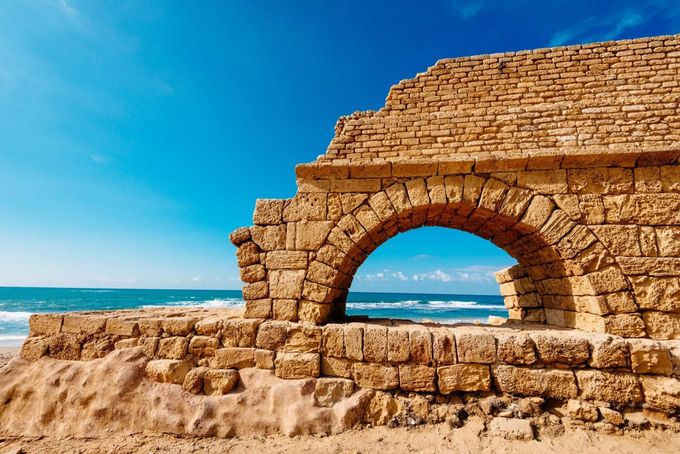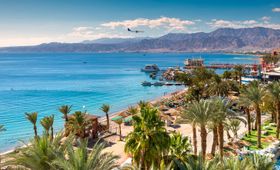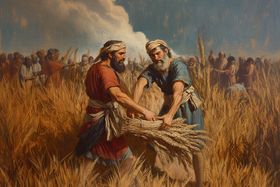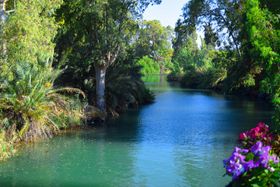18 Facts on the Holy Land - Part 2
Published April 28, 2025

Welcome back to 18 Facts on the Holy Land Pt2, a continuation from Pt1.
As we journey from the rich cultural tapestry and profound religious significance of the Holy Land explored in Part 1, we now delve deeper into its historical milestones, contemporary dynamics, and intriguing lesser-known facts that shape this extraordinary region today.
Historical Highlights
Where to begin, with the Holy Land being such a prominent location for such a long time, where significant events and milestones that have shaped not only the region but also the course of human civilization.
18 facts on the Holy Lands history:
Biblical Times (17th-6th Century BCE)
c. 17th Century BCE: Abraham, Isaac, and Jacob, patriarchs of the Jewish people, settle in the Land of Israel.
c. 13th Century BCE: Moses leads the Israelites from Egypt, followed by 40 years of wandering in the desert.
c. 1020 BCE: Jewish monarchy established; Saul becomes the first king.
c. 1000 BCE: Jerusalem is made the capital of King David's kingdom.
c. 960 BCE: The First Temple, built by King Solomon, becomes the national and spiritual center of the Jewish people.
586 BCE: Judah is conquered by Babylonia; Jerusalem and the First Temple are destroyed.
The Second Temple Period (538 BCE - 313 CE)
538-515 BCE: The Temple is rebuilt by returning Jews from Babylonia.
332 BCE: Alexander the Great conquers the Land.
63 BCE: Jerusalem is captured by the Romans.
c. 4 BCE: Jesus of Nazareth is born in Bethlehem.
c. 30/33 CE: Crucifixion, burial, and resurrection of Jesus.
70 CE: The Second Temple is destroyed by the Romans.
Foreign Domination (313-1917 CE)
610 CE: The Prophet Muhammad begins receiving revelations from Allah.
622 CE: The Hijra (migration) of Muhammad and his followers from Mecca to Medina marks the beginning of the Islamic calendar.
632 CE: Death of Prophet Muhammad; the Rashidun Caliphate is established.
691 CE: The Dome of the Rock is built on the Temple Mount by Caliph Abd el-Malik.
1099-1291 CE: Crusader domination (Latin Kingdom of Jerusalem).
1517 CE: Ottoman rule begins.
1860 CE: First neighborhood built outside Jerusalem's Old City.
Modern Era (1917-Present)
1917 CE: British conquest ends 400 years of Ottoman rule; Balfour Declaration supports a Jewish national home.
1948 CE: State of Israel is proclaimed; the War of Independence follows.
As we can see by the timeline above, the Holy Land has so much importance to history, serving as the crossroads and a focal point of civilizations and the birthplace of three major world religions. Within the Holy Land these sacred sites have been witness to monumental events, from the founding of ancient kingdoms and the rise of prophetic figures to the conflicts and resolutions that have shaped both the historical world, but also the modern world.
Modern-Day Holy Land: 18 Facts on the Holy Land and about the Current Political.
Political Landscape
State of Israel: Established in 1948, the State of Israel is a democratic country located in the heart of the Holy Land (The only liberal democratic country in the Middle East). As we know from X Facts on the Holy Land Pt1 & Pt2 the Holy Land has a diverse society with Jewish, Arab, Druze, and other communities living together.
Modern-Day Holy Land: 18 Facts on the Holy Land and Social Landscape.
Cultural Diversity: The Holy Land is a melting pot of cultures and traditions. Within its 9.5 million person population including; Jews, Christians, Muslims, Druze, Bedouins, and other minority groups. This diversity is reflected in the region's festivals, traditions, and daily life, contributing to a rich cultural mix.
Fun and Lesser-Known 10 Facts on the Holy Land.
Israel has two official languages: Hebrew and Arabic
Israel is the only liberal democracy in the Middle East.
Israel has more museums per capita than any other country in the world.
The oldest tree in Israel is a jujube tree in Ein Hatzeva on the road to Eilat, which is thought to be between 1,500 to 2,000 years old.
On average 1 million notes and prayers are left in the Western wall each year.
At the Church of the Holy Sepulchre an old wooden ladder has been propped up against a window since the 18th century. No one can move it because the building is managed by six different churches and none can agree on who owns the ladder.
More than half the landmass of Israel is desert.
The Dead Sea is the lowest point on Earth.
Israel has many of the world’s most important religious sites.
Israel is the only country where they have more trees now-a-day than 50 years ago
As we wrap up our exploration of the Holy Land in Part 2 of "X Facts on the Holy Land," we find that this region is not only a historical and spiritual focal point, but also a vibrant and evolving landscape in the modern world, leading in technology and health.
Having completed this journey, it becomes evident that the Holy Land is more than just a place on a map; it illustrates the enduring power of history, faith, and humanity. The stories, the struggles, and the successes offer valuable lessons and are proof of the strong-will and beauty of this small country, known as the Holy Land.








